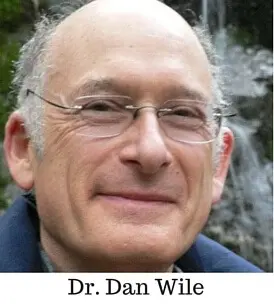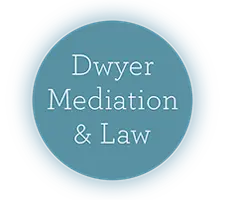What Collaborative Couples Therapy Can Teach Mediators and Lawyers

In my last post, I summarized the basic theory and practices of Collaborative Couples Therapy offered by psychologist Dan Wile.
Today, I want to explore whether a practice designed to help couples stay married has something to offer mediators and lawyers who are helping couples dissolve their marriages.
Good Communications in a Divorce?
A major tenet of Dan Wile’s teaching is that a couple’s problems are heightened by their inability to have an effective conversation about their problems.
Maybe your first reaction is: “How does this apply to divorcing couples?” Good communications may be fine for couples who wish to stay married, but why would divorcing spouses even bother?
Aren’t couples seeking a divorce headed in opposite directions?
Some have already moved on and have no desire to improve a relationship that is, in their minds, already over. Others are so angry and hurt that they want nothing to do with their spouse.
Wouldn’t they prefer to go their separate ways? What would motivate them to put in the time and effort to break bad communications patterns and try new ones?
There is no doubt that plenty of divorcing spouses share this attitude.
Many people, however, might say they want nothing more to do with their spouse, but that is merely a protective stance. Underneath is often a deep hunger for the connection they have been missing.
Good communications in mediation may not restore the marriage (though in rare cases it can), but it can definitely help people move back from the lonely, alienated abyss of treating each other as strangers or enemies.
At the very least, effective communication can help with closure.
Many other couples want to improve their communication patterns for the sake of the children. They know that continued parental conflict is the most harmful risk factor for children of divorced parents. These parents have enough distance, maybe just enough distance, from their personal distress to take seriously their role of co-parenting.
On a more practical level, people who are able to communicate well in mediation have a much better chance of achieving a durable and fair agreement. Good communications collapses the inflexible twin stances of angry self-righteousness and demonization– the chief roadblocks to reaching agreement.
Effective communications involve taking responsibility for developing clear perceptions, accurately recognizing our feelings, and expressing ourselves clearly. It also requires effort to understand how the other person is thinking and feeling, whether or not we agree with them.
So, yes, I agree with Dan Wile’s fundamental thesis that a couple’s problems are heightened by an inability to have a good conversation, and they benefit greatly from good conversations. This applies even to divorcing couples.
Enemies, Strangers, or Allies?
Dr. Wile teaches that instead of sharing what each partner is thinking and feeling, people routinely fight and become enemies (the Adversarial Cycle) or withdraw to avoid a fight and become strangers (Withdrawn Cycle).

In marital therapy, Dr. Wile works with couples to move from acting as enemies or strangers to restoring their shared sense of being marital partners working in collaboration.
Similarly, in divorce mediation, when the mediator helps people work together to create mutually fair and durable agreements, the mediator is helping people move from getting stuck as enemies or strangers to working cooperatively to solve problems.
I have experimented with Dr. Wile’s labels. Clients seem to find them useful. Without getting defensive, clients are able to identify their relationship status as enemies or strangers or collaborators.
It also helps them see the patterns in play during their mediation. With simple labels they can easily see, for example, whether one or both of them are running away (strangers) or fighting (enemies). That often leads to helpful discussions about how one behavior reinforces the other in a cyclical and reinforcing pattern.
It also helps clients gauge their progress on any particular issue in mediation. Regarding children and financial issues, they may be in very different places, able to act cooperatively in one area but competitively or avoidantly in others. The labels help them to see how far they need to move to achieve cooperation and agreement.
Going Deeper
To avoid using “fallback measures” of attack and avoidance, Dr. Wile helps couples find their “lost voices.” Borrowing Marshall Rosenberg’s term (read Non-Violent Communications), he helps them discover what is “alive” for them at the moment.
He does this by helping couples go “within,” to discover their authentic voices. That means uncovering their core feelings, which Wile calls the “leading edge.”
Instead of pulling back from sharing one’s deepest feelings, which leads to withdrawal in one and either withdrawal or aggression in the other, Dr. Wile hopes to restore intimacy (connection) by having a conversation about their so-called negative feelings.
Mediators (at least those trained in non-adversarial mediation theory and practice) will easily connect with this approach. Mediators are also working constantly to help people engage in a deeper conversation than the polarized, rigid positioning where clients are often themselves stuck.
While using slightly different words, all leading teachers of conflict resolution encourage mediators to help their clients get below the surface and identify core thoughts and feelings and concerns that are driving the conflict and must be addressed to create a fair and durable agreement.
Ury and Fisher encourage mediators to identify the clients’ underlying “interests.” Marshall Rosenberg speaks of recognizing mutual “needs.” Gary Friedman encourages mediators to help clients “descend” into the “V” to explore underlying emotions so they can “return” to problem-solving with a variety of options. Ken Cloke helps us recognize the many complex dimensions of conflict that must be addressed for full conflict resolution.
The purpose of these efforts is not, as it is for Dr. Wile, to restore marital intimacy. Rather, the purpose is to help the divorcing couple agree on divorce terms that address their core concerns, interests and fears. The exploration is designed to help clients understand how many options exist that might address their concerns, and to locate those options that are most congruent with their concerns. This helps clients move from their usual stuck place of believing that their position is the one and only way to get what they want.

Doubling
Dr. Wile has a unique therapeutic method for developing the clients’ voices. In “going between” a couple, he helps the couple turn the fight or withdrawal into a conversation.
For Dr. Wile, “going between” takes a literal, physical dimension. In what he calls “Doubling,” the therapist takes turns speaking authentically on behalf of each client in a skillful manner to maximize the chances of being heard by the other person.
Dr. Wile actually gets out of his chair and kneels next to the person for whom he is speaking so that person feel he is on their side.
Dr. Wile’s goal is to help the lost voice find expression in a way that is easier for the other partner to hear. Thus, he restates a person’s angry, accusatory, blaming or avoidant statements into calmer, stronger, and non-blaming statements.
As a neutral mediator, I certainly want to bring into the room my clients’ core concerns, especially those that are struggling to be spoken skillfully, or at all. So I share with Dr. Wile the prime thrust of this technique.
All good mediators are familiar with and will use reframing techniques. Here we try to restate the person’s remarks to get at the core of what the person is trying to say more skillfully. We want the spouse’s thoughts and feelings to be voiced in a way that maximizes the chances the other spouse will be able to receive, hear, and understand them.
I will also, like Dr. Wile, check out whether my attempt to give voice to the client’s thoughts and feelings is accurate or off the mark. If the client says I got it right, the client feels understood, at least by me. If the client says I got it wrong, I will ask how to make it more accurate.
I will work on this until the client says I have it right, which usually creates a pronounced and visibly relaxation of tension in the client. I love Dr. Wile’s question for getting to this place. He asks his clients: “How much of this is right and how much is wrong?” This leaves plenty of room for the client to take responsibility for making an independent assessment of the professional’s attempt to support to “translate” the client’s lost or unskillful voice.
I also like how Dr. Wile courageously attempts to bring into the open a conversation that lays hidden but is seeking expression. I am reminded here of Ken Cloke’s teachings in his great book, Mediating Dangerously. But mediators also have to aware of the limits here. I cannot push a conversation that is not ripe for the clients, or it arises based on my own ego and will be firmly resisted by the clients.
I doubt, however, whether I (or any mediator) will feel comfortable using Dr. Wile’s Doubling technique in mediation. Clients are anxious and alert to any signal that I have lost my neutrality and might be siding with their spouse. From the vantage point of my chair at a round table, I can ask questions that elicit hidden but lurking conversations, or give a more skillful reframing of a client’s statement, but I would not want to risk the possibility that a client may feel abandoned and betrayed by me, and loses trust in me, if I were to move physically to assist only other spouse.
Having said that, Jane and I actually have used the Doubling technique successfully in co-mediation, though we have to be careful to avoid alignment and splitting.

Finding the Platform
In going above, Dr. Wile helps his clients find a “platform” by creating a compassionate vantage point from which each person can find empathy for the other in the middle of the conflict. From this “joint platform” they can speak collaboratively about their problems.
Mediators do much the same thing.
Offering “The Third Side,” as William Ury calls it in his book by that name, is perhaps the greatest benefit and justification for mediation. In effect, the mediator offers clients who are locked in conflict another vantage point than the closed and narrow place in which they find themselves, with their constricted perceptions, heightened emotions, skewed judgments, and limited room to exercise choice.
I think the first part of Gary Friedman’s “Loop of Understanding” is really employing the same idea. As the mediator listens deeply to the clients and fully understands their emotions and core concerns, the mediator is, in effect, staking out and holding ground for the clients until they are able to locate that space of understanding in and between themselves.
Again, reframing techniques are most helpful. Mediators learn to reword client statements, constantly searching for an empathic, non-polarized framework that speaks of shared problems and the need for shared solutions. Mediators also learn to take whatever doses of empathy and care arise and spread it around liberally.
What Divorce Processes Support Good Communications?
In short, I think Dr. Wile’s theory and practice have much to offer divorce mediators.
It is important to emphasize, however, that Dr. Wile’s Collaborative Therapy approach is not going to be of much use to mediators and lawyers operating primarily in the adversary system.
The traditional divorce system is based on the adversary system and is geared toward litigation resulting in a trial in which a judge imposes a decision on a divorcing couple. That model is based on competition and a win-lose structure.
While it is true that most divorce cases settle rather than proceed to trial, those settlement conferences, even when they go under the label of mediation, do not involve the kinds of collaborative communication practices that I have been discussing in this blog entry. In divorces using the litigation model, the lawyers prefer to have clients in separate rooms with the mediator shuttling back and forth. The clients are never truly in anything but perhaps a “virtual conversation.”
Whether this system is the best fit for clients depends on their desire and ability to participate in collaborative conversations. I just wish to point out that the litigation system, while very necessary for cases that cannot be resolved by agreement, is not a place for clients to have a collaborative conversation. There is simply no place in the system for such conversations to occur.
So, for those couples who want to remain amicable after divorce, such as co-parents, the litigation system may be a poor fit. These couples are, more and more, opting instead for mediation or collaborative law, which aim for effective conversations, skillful communications, and the kinds of practices and approaches that Dr. Wile offers us in Collaborative Therapy for marital couples.
Coming Soon
In part 3 of this series, I will write about Dr. Wile’s methods for helping the therapist (or divorce professional) keep his or her calm in the face of a client’s negative behaviors.
If you think you need the services of an experienced, non-adversarial mediator, feel free to contact me online or by phone at (503) 241-9456.
